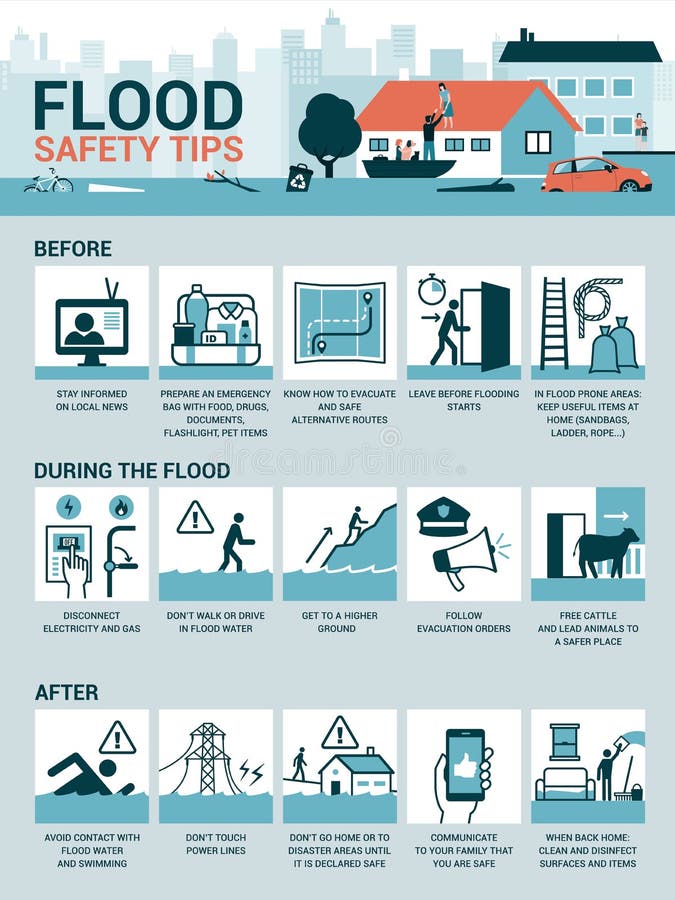Everything You Need To Know About Flood Alerts And Flood Preparedness

Table of Contents
Understanding Flood Alerts and Warning Systems
Effective flood preparedness starts with understanding the different types of flood alerts and how to receive them. Knowing the difference between a watch, warning, and advisory is crucial for taking appropriate action.
Types of Flood Alerts
The National Weather Service (NWS) uses a standardized system to communicate flood risks:
-
Flood Watch: This means conditions are favorable for flooding. Be prepared to take action if flooding occurs. A flood watch might be issued when heavy rainfall is expected or a dam is nearing capacity.
-
Flood Warning: Flooding is occurring or is imminent. Take immediate action to protect yourself and your property. This alert is issued when flooding is already happening or is expected very soon.
-
Flood Advisory: Flooding is possible in specific areas. Be aware of the potential for flooding and monitor the situation. An advisory is typically issued for less severe flooding than a warning.
How to Receive Flood Alerts
Staying informed is paramount. Utilize multiple methods to receive timely flood alerts:
-
NOAA Weather Radio: This dedicated weather radio broadcasts 24/7, providing critical weather information, including flood warnings and advisories.
-
Weather Apps: Numerous weather apps (like WeatherBug, AccuWeather, The Weather Channel) offer customizable alerts for your specific location. Ensure you enable push notifications for severe weather alerts.
-
Emergency Alert System (EAS): Your television and many mobile devices are equipped to receive EAS alerts, including those for severe flooding.
-
Local News: Stay updated by watching local news channels and listening to local radio stations for weather reports and emergency announcements.
-
Government Websites: Check your local government's website for emergency information and flood-related announcements. Many municipalities offer sign-up options for text alerts.
Creating a Flood Preparedness Plan
A well-defined flood preparedness plan is crucial for minimizing the impact of a flood event on your family and property. This plan should be practiced regularly.
Developing Your Family's Emergency Plan
Your family's flood emergency plan should be a written document accessible to everyone. Include:
- Evacuation Routes: Identify multiple escape routes from your home, considering potential road closures.
- Meeting Points: Designate several safe meeting points – both near your home and further away – in case you get separated.
- Emergency Contact List: Create a list with contact information for family, friends, and emergency services. Include out-of-state contacts who can assist if local lines are down.
- Practice Drills: Regularly practice your evacuation plan to ensure everyone knows what to do and where to go.
Protecting Your Property
Proactive steps can significantly reduce flood damage:
- Flood Insurance: Consider purchasing flood insurance, even if you're not in a high-risk flood zone. Standard homeowner's insurance typically does not cover flood damage.
- Flood-Proofing: Elevate electrical appliances, install flood barriers, and consider waterproofing your basement.
- Elevate Valuables: Store important documents, photos, and irreplaceable items in waterproof containers and on higher shelves or floors.
Building an Emergency Kit
A well-stocked flood emergency kit is essential:
- Water: Store at least one gallon of water per person per day for several days.
- Food: Non-perishable food items that require minimal preparation.
- First-Aid Kit: A comprehensive kit with essential medications and supplies.
- Important Documents: Copies of insurance policies, identification, and other crucial documents stored in a waterproof bag.
- Flashlight and Radio: Battery-powered or hand-crank options are ideal.
- Personal Hygiene Items: Toiletries, wipes, etc.
- Pet Supplies: Food, water, and any necessary medications for your pets.
Responding to a Flood Warning
When a flood warning is issued, immediate action is critical.
Evacuation Procedures
- Move Quickly and Safely: Evacuate immediately when instructed by authorities. Avoid flooded areas.
- Gather Essentials: Take your emergency kit, important documents, and any irreplaceable items.
- Follow Official Instructions: Obey instructions from emergency personnel and follow designated evacuation routes.
- Seek Higher Ground: Go to a pre-designated shelter or the home of a friend or family member in a safe location.
Staying Safe During a Flood
- Avoid Floodwaters: Never drive or walk through floodwaters. The water may be deeper and faster than it appears, and it may contain dangerous debris or contaminants.
- Stay Away from Downed Power Lines: Report any downed power lines immediately to utility companies.
- Be Aware of Potential Hazards: Watch out for sharp objects, debris, and unstable structures. Be cautious of gas leaks and contaminated water.
- After the Flood: Be aware of the dangers of contaminated water and potential hazards like unstable structures and debris.
Conclusion
Being prepared for floods is crucial for your safety and well-being. By understanding flood alerts, developing a comprehensive flood preparedness plan, and knowing how to respond effectively, you can significantly reduce the risk and impact of flood damage. Don't wait for a flood warning – take action today to protect yourself and your family. Learn more about flood alerts and develop your flood preparedness plan now! Remember, proactive flood preparedness is the best defense against the devastating effects of flooding.

Featured Posts
-
 Post Biden America A Delaware Governor Sounds The Alarm On Fascism
May 26, 2025
Post Biden America A Delaware Governor Sounds The Alarm On Fascism
May 26, 2025 -
 Mynamynw Ymdd Teaqdh Me Mwnakw Lmwsm Akhr
May 26, 2025
Mynamynw Ymdd Teaqdh Me Mwnakw Lmwsm Akhr
May 26, 2025 -
 Top Nike Running Shoes For 2025 Performance And Style Compared
May 26, 2025
Top Nike Running Shoes For 2025 Performance And Style Compared
May 26, 2025 -
 X Et L Extreme Droite Europeenne Le Role D Elon Musk Sous Le Microscope
May 26, 2025
X Et L Extreme Droite Europeenne Le Role D Elon Musk Sous Le Microscope
May 26, 2025 -
 Hells Angels Structure Activities And Influence
May 26, 2025
Hells Angels Structure Activities And Influence
May 26, 2025
Latest Posts
-
 Saeaestae Rahaa Lainan Vertailu Auttaa Loeytaemaeaen Edullisimman Lainan
May 28, 2025
Saeaestae Rahaa Lainan Vertailu Auttaa Loeytaemaeaen Edullisimman Lainan
May 28, 2025 -
 Lainan Vertailu Paras Tapa Loeytaeae Edullisin Laina Korkeiden Korkojen Aikana
May 28, 2025
Lainan Vertailu Paras Tapa Loeytaeae Edullisin Laina Korkeiden Korkojen Aikana
May 28, 2025 -
 Korkeat Korot Ja Edullisempi Laina Vertaile Ja Saeaestae
May 28, 2025
Korkeat Korot Ja Edullisempi Laina Vertaile Ja Saeaestae
May 28, 2025 -
 Kaupallinen Yhteistyoe Lainaa Korkeiden Korkojen Aikaan Loeydae Edullisempi Laina Lainanvertailulla
May 28, 2025
Kaupallinen Yhteistyoe Lainaa Korkeiden Korkojen Aikaan Loeydae Edullisempi Laina Lainanvertailulla
May 28, 2025 -
 Manchester United In 25m Transfer Battle With Liverpool
May 28, 2025
Manchester United In 25m Transfer Battle With Liverpool
May 28, 2025
